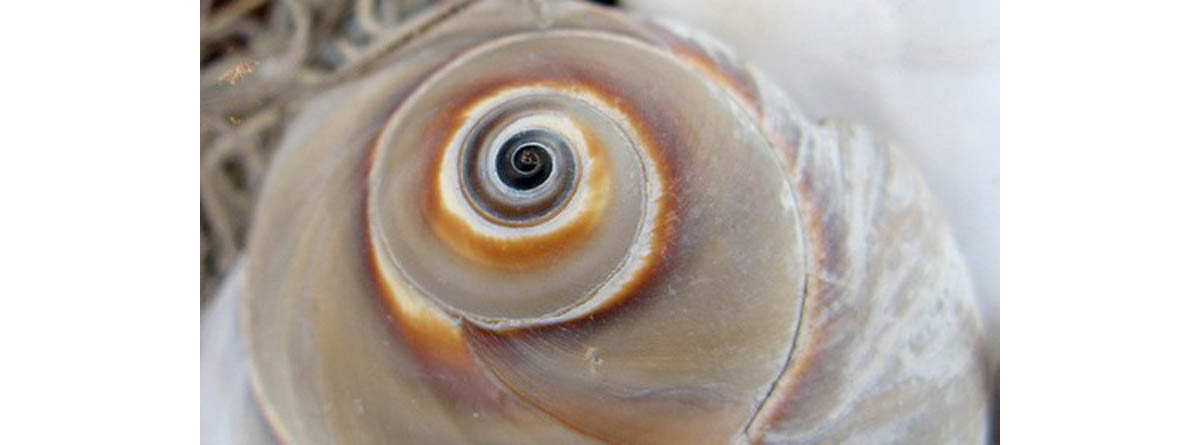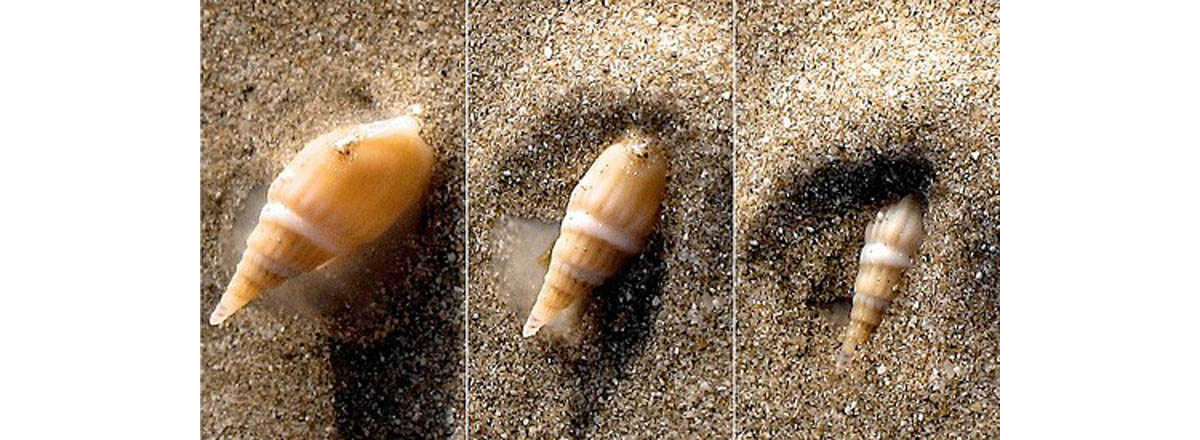The intricate patterns and beautiful colors of cone shells never fail to attract the attention of collectors. In the Enlightenment Gallery of the British Museum in London you can spot a little old box full of shells. This is a part of collection brought to Europe in 1771 by Joseph Banks, the scientist from the famous Endeavour voyage, the first Pacific expedition of Captain James Cook. Many items now look dull and grey (the colors have faded after so many years) but the cone shells are still some of the brightest in the box.

The shells of cone snails from this box were the first representative of several snail species common around the Pacific. In general, cone snails are not rare (apart from those few most beautifully decorated and over-harvested species) and can be found in the most tropical waters of the world’s oceans.
Snail Venom and Medicine
Cone snails are now much more popular among scientists than ever before. In the last 30 years, thousands of research articles about them were published. And the number is growing fast. But it’s not their color and decorations that make researchers excited these days. It’s their venom. The venom of these seemingly innocent snails is packed with biologically active components that might be useful for treating the diseases and conditions as different as epilepsy and cancer.
Cone snails are predators. They hunt for small fish using a venom-filled harpoon tooth. Toxins in the venom paralyze, stun or immediately kill the unfortunate prey. Since cone shells are slow moving animals, the effect of venom must be immediate. If prey swim away by just a couple of meters after stinging, the snail might never have a chance to consume its meal.
Rich pharmacopeia of snail venom
Each cone snail species has around 100-200 venom components in its repertoire, mostly so called conopeptides. Conopeptides are relatively short protein molecules consisting of 10-30 amino acids. The repertoire of these peptides in each species is distinctly different – there is hardly any overlap between two different types of cone snail. Taking into account that there are around 500-700 species of cone snail currently known, we can expect to discover between 50,000 and 140,000 different conopeptides.
The variety of these peptides is explained by two factors. The first reason is the variety of prey. Cone snails do not hunt for just one specific kind of fish, they are opportunistic predators. Different prey species have Differing sensitivities to the components of venom. Also, cone snails use venom to protect themselves from crabs, mollusc-eating fishes and drilling snails capable of turning the dining table around.
The second reason for the variety and diversity of protein is their co-operative mode of action. Cone snail peptides work so fast because they work together. The groups of peptides in the venom aim at different biochemical targets with the intention to achieve the same desirable physiological end point. Some researchers compare this action to the combination therapy which is used to treat diseases like HIV and cancer: each individual component is not sufficient, but the use of a whole combination may help to achieve the effect. Some fish-hunting cone snails use the combination of peptides which scientists call “the lightning strike cabal”. They hyper-activate the neurons which allow the extremely rapid immobilization of prey resulting in the tetanus paralysis. Another group of snails use a different peptide combination which make the prey quiescent and sedated (the “nirvana cabal”).
New Drugs From Snail Venom
The fact that the conopeptides are so plentiful and that they work mostly on the level of the nervous system provides huge opportunities for scientists.

It also lacks the major drawback of opioid drugs like morphine – the addictive effect. The reason for that is a different drug target in the body. Prialt works on a completely different biochemical pathway, targeting so called calcium channels in nervous cells. Channel proteins are involved in transmission of neural signals, and their inhibition means that nerves are unable to perform their basic function. In the human body, Prialt targets only some specific nerves in the spinal cord. As a result, humans are not paralyzed by this component of snail venom, but get an analgesic effect instead.
The success of Prialt inspired further scientific search. The cells of the nervous system have an abundance of various receptors capable of responding to different environmental and chemical signals. Depending on a particular target, the response can be very different. Snail venom is packed with peptides capable of interactions with various receptors in the central nervous system. These peptides selectively aim at certain targets – receptors and proteins – in the cells of the nervous system. Hundreds of peptides from cone snails specifically target particular ion channels or specific forms of receptors in these cells.
Snail venom peptides: new drugs in the pipeline
Having a set of peptides capable of selectively activating various receptors in the brain presents an invaluable tool for both biomedical research and clinical applications. And the search does bring more and more fascinating discoveries.
All of these diseases are caused by the malfunctioning of certain components in the nervous system. The use of finely tuned molecular tools in the form of neurologically active conopeptides may help to adjust the delicate balance in the brain and address the causes of these problems.
Many of the peptides isolated from the snail venom can be used for multiple purposes. For instance, Conantokin-G from Conus geographus, one of the best characterized peptides from this mollusc, was shown to be active as a neuroprotective agent in brain injury, pain killer and a drug for epilepsy. Another conopeptide, κ-conotoxin PVIIA, has cardioprotective effects and was demonstrated to reduce the size of myocardial infarction in animal experiments.
At the moment, scientists have only started to uncover the rich natural pharmacopeia of cone snails. There are hundreds of other marine animals whose medicinal potential still waits to be unlocked.
- Han, T.S. et al. (2008) Conus venoms – a rich source of peptide-based therapeutics. Current Pharmaceutical Design 14, 2462-2479.
- Joseph, B. et al. (2011) Conotoxins: a potential natural therapeutic for pain relief. International Journal of Pharmacy and Pharmaceutical sciences 3, Suppl. 2, 1-5.
- Olivera, B.M. and Teichert, R.W. (2007) Diversity of the neurotoxic conus peptides. Molecular Interventions 7, 251-260.
- Olivera, B.M. et al. (2013) Snail Peptides. Chapter 61 in Handbook of Biologically Active peptides. 2nd Edition. Academic Press.
- Photo courtesy of lenbo on Flickr: www.flickr.com/photos/lenbo/1248478101
- Photo courtesy of birgerhoppe on Flickr: www.flickr.com/photos/birgerhoppe/5323990095

